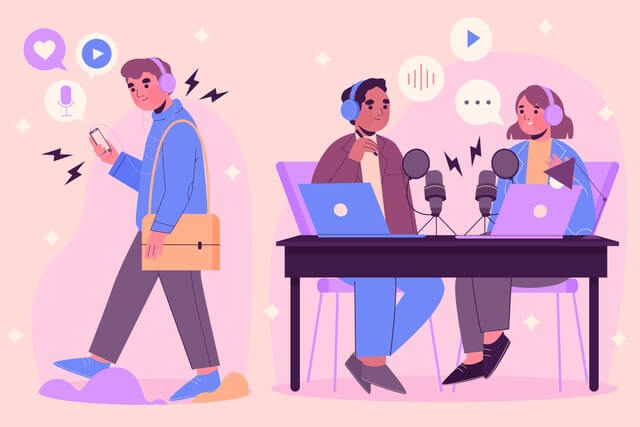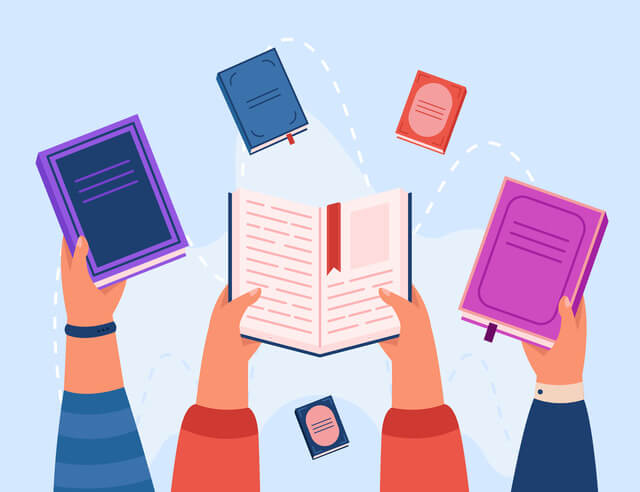The pre-listening stage help students to prepare for what they are going to hear, and this gives them a greater chance of success in any given task.
Pre-Listening Tasks can:
- Set the context of something they are going to listen to
- Motivate students to listen.
- Activate background knowledge.
- Help teachers find out what students already know about the topic.
- Prepare students for the vocabulary and language structures in the text.
- Help mitigate the anxiety which comes from listening in a foreign language, by providing a clear context.
- Offer opportunities for class discussion and more interaction among students.
Now let’s learn about the best books to learn more about pre-listening tasks.
Tabla de contenido
- Books to Learn How to Teach Listening
- Types of Pre-Listening Tasks
- 1. Visuals: What Theme is it?
- 2. Basic Brainstorming
- 3. Brainstorming & Word webs:
- 4. Brainstorming: Brain Walking
- 5. Brainstorming: Board Writing
- 6. Visuals – What Do you Think Happened?
- 7. Visuals – Make up a Story
- 8. Visual – Time To Draw
- 9. Teach me
- 10. Chinese whispers
- 11. Sing along:
- 12. Graphic organizers
- 13. Controversial Opinions
- 14. Let me read it first
- 15. Mime it
- 16. What do I need to do, teacher?
- 17. Note-taking:
- 18. Who’s who?
- 19. True or False
Books to Learn How to Teach Listening
These are some of my favorite books to learn the ins and outs about how to teach listening:
- How to Teach Listening by J.J Wilson
- How to Teach English by Jeremy Harmer
Those two books explore the different stages of a listening lesson besides providing additional and relevant information about the listening process as a whole.
Now let’s check the most common pre-listening tasks to implement in the ESL Classroom
Types of Pre-Listening Tasks
The two main stages of this part of the listening lesson are:
- The first stage involves activating schemata in order to help students predict the content of a listening passage.
- The second stage involves giving a student a reason for listening
Here are some pre-listening activities which can be adapted easily for different classes and levels, as well as for general English and ESP listening lessons:
1. Visuals: What Theme is it?
The first pre-listening task is called what theme is it?
Show eye-catching images, maps, or diagrams to help students guess the theme of the listening text.
Students can write pre-listening comprehension questions, then listen to see if their questions are answered.
2. Basic Brainstorming
The most basic form of brainstorming consist of revealing the theme of the listening passage and students make notes on papers before they share their ideas with the rest of the group
3. Brainstorming & Word webs:
Give students the topic of the listening and elicit words from them.
With students’ help draw semantic webs on the board with the words, focusing on the relationships between the words, the topic, and sub-topics that might come up in the listening.
4. Brainstorming: Brain Walking
You can paste posters around the classroom and divide students in small groups, students go to the poster and talk about what comes to mind after taking a look at the posters.
5. Brainstorming: Board Writing
You divide the class into small groups, the groups have to brainstorm ideas related to the topic given by the teacher.
The teacher divides the board into small sections and one representative of each group adds the words to the group brainstormed.
6. Visuals – What Do you Think Happened?
Show a picture related to the listening passage and ask students to come up with ideas of what happened.
Students can work in small groups and come up with an idea and share it with the rest of the class.

7. Visuals – Make up a Story
Provide learners with some pictures and they have to place the pictures in a order that make sense.
You should ask them to write briefly what they think it happened
8. Visual – Time To Draw
Provide the learners with the topic and ask them to draw something related to it
Ask them to provide as many details as they can.
As a follow-up, we may wish to display the illustrations for all to see. This activity is especially useful for younger learners.
9. Teach me
Give each student a couple of words and expressions. Ask them to explain the words/expressions to one another in pairs.
Quickly check with the whole group, and students then make a short of what they said.
They can use that list in the while-listening stage and tick the words they hear in the listening passage.
10. Chinese whispers
Use a sentence or expression related to the theme of the listening.
Arrange students in two lines, whisper a word/expression to the first in the line, who whispers it on to the next in line, and so on until the last student in the line shouts out the word/expression they hear or writes the word/expression on the board.
Score points for correct words.
11. Sing along:
Teach students a short song, a rhyme, or a jazz chant on a topic related to the text they are going to listen to.
12. Graphic organizers
Give students a blank graphic organizer which summarizes the information in the text under headings.
Students listen and fill-in key words that they hear in the correct places.
13. Controversial Opinions
If the listening involves a controversial issue or question such as :
- What should be the minimum driving age?
- Should we ban violent video games?
Students then listen to the text and see what opinions are voiced.
You can also have a quick ‘anonymous’ poll, whose results can be revealed at the end of the lesson.
14. Let me read it first
Give students the first lines of the transcript of the text they are going to listen to.
You could even give them the whole transcript and very little time to read it
Then work on listening for specific information without students reading the transcript. This is an effective activity for complex texts with many details.
15. Mime it
If there is a dialog in the listening, mime part of it, to arouse students’ interest.
You can also ask students to mime small part of it.
16. What do I need to do, teacher?
Write instructions in point form for the listening in the wrong order.
Ask students to order them.
This activity may help relax students for the listening, as they know exactly what is going to happen next.
17. Note-taking:
Discuss the topic with students and have them brainstorm headings to take notes under. Then brainstorm the sort of transition words they might hear.
18. Who’s who?
If students are going to listen to a dialog with several characters and of course if identifying the characters is not going to be one of the tasks in the listening. Give them an overview of who’s who in the listening
Dialogue with several speakers can be difficult sometimes, so this task can help them have a higher rate of success in it.
19. True or False
As a teacher, you can prepare a series of statements, some of them true and some of them false.
Read these to your students and let them determine if those statements you are making are true or false.
Don’t corroborate if they are right or wrong. This will help learners to have a reason for listening


